Golf Cart Battery Cables: Safety Tips and Installation Guide
Golf cart battery cables play a crucial role in the performance and reliability of your golf cart's electrical system. When it comes to replacing these cables, it's essential to prioritize safety and adhere to proper installation procedures. This comprehensive guide provides valuable information on safety precautions, cable sizing, handling battery acid, and following manufacturer guidelines. By following these recommendations, you can ensure a smooth and secure replacement process for your golf cart's battery cables.
Are all golf cart battery cables the same?
No, not all golf cart battery cables are the same. The specifications and requirements for battery cables can vary depending on factors such as the make and model of the golf cart, the type of batteries used, and the electrical system's configuration. Here are a few key points to consider:
-
Size and Gauge: Battery cables come in different sizes and gauges, which determine their thickness and current-carrying capacity. Golf carts typically require battery cables with sufficient gauge to handle the electrical load generated by the cart's motor and accessories. Thicker cables with lower gauge numbers (such as 4 or 2 gauge) are usually needed for higher-powered golf carts, while smaller gauge numbers (such as 6 or 8 gauge) may be suitable for lower-powered carts.
-
Length: The length of the battery cables should be appropriate for the specific golf cart model and battery layout. Longer cables may result in voltage drop and reduced efficiency. It's essential to choose cables that are long enough to connect the batteries and reach the necessary electrical connections without excessive slack or tension.
-
Terminal Size and Type: Battery cables have terminals that connect to the battery posts. The terminals should match the size and type (such as top post or side post) of the battery posts in your golf cart. Ensure that the terminals are compatible and securely fit the battery posts for proper electrical contact.
-
Quality and Material: Invest in high-quality battery cables made from durable materials, such as copper or tinned copper. Copper is an excellent conductor of electricity and provides efficient power transfer. Tinned copper cables offer enhanced corrosion resistance, which is beneficial in the golf cart's battery compartment, where exposure to moisture and chemicals may occur.
-
Replacement and Customization: When replacing battery cables, it's essential to match the specifications of the original cables or consult the golf cart manufacturer's recommendations. If you are customizing your golf cart's electrical system or upgrading to higher-powered components, you may need to consider specialized battery cables that can handle the increased electrical demands.
Always consult the golf cart manufacturer's guidelines or seek advice from a reputable dealer or professional technician when selecting battery cables for your specific golf cart. They can provide you with the most accurate information and ensure that you choose the appropriate cables for your golf cart's electrical needs.

Safety Precautions for Golf Cart Battery Cable Replacement
-
Disconnecting Power: Before starting any work on the battery cables, make sure to disconnect the power completely. Turn off the ignition switch, remove the key, and disconnect the battery pack by loosening the negative (-) terminal first, followed by the positive (+) terminal. This eliminates the risk of electrical shocks and prevents short circuits.
-
Personal Protective Equipment (PPE): Wear appropriate PPE, including protective gloves and safety glasses, to safeguard yourself from potential acid spills and corrosive chemicals during battery maintenance.
-
Battery Acid Handling: Golf cart batteries contain sulfuric acid, which is corrosive and can cause harm. Take the following precautions:
-
Avoid direct contact with battery acid. If any acid comes into contact with your skin or eyes, immediately rinse the affected area with clean water and seek medical attention.
-
Handle batteries carefully to prevent spills. Keep them in an upright position and avoid tipping or dropping them.
-
Clean any battery acid spills or corrosion using a solution of baking soda and water or a specialized battery terminal cleaner. Use a brush or cloth to gently scrub away the corrosion.
-
Section 2: Golf Cart Battery Cable Installation Guide
-
Cable Sizing and Gauge: Ensure that you choose battery cables with the correct size and gauge for your golf cart. Thicker cables with lower gauge numbers (such as 4 or 2 gauge) are suitable for higher-powered carts, while smaller gauge numbers (such as 6 or 8 gauge) may be appropriate for lower-powered carts. Refer to the manufacturer's recommendations or consult a professional technician to determine the right cable size and gauge for your specific golf cart model.
-
Cable Routing: When installing the new battery cables, ensure they are routed properly, away from moving parts, sharp edges, or areas of excessive heat. Secure the cables using cable ties or clips to prevent rubbing against other components or tangling.
-
Secure Connections: Tighten the battery cable connections securely. Loose connections can cause electrical resistance, overheating, and poor performance. Use the recommended torque specified by the manufacturer to ensure proper tightening.
-
Manufacturer Guidelines: Always follow the golf cart manufacturer's instructions and guidelines for battery cable replacement. They provide specific details and recommendations tailored to your golf cart model, ensuring a safe and efficient installation process.
Replacing golf cart battery cables requires careful attention to safety and adherence to proper installation procedures. By following the recommended safety precautions, selecting the correct cable size and gauge, handling battery acid cautiously, and following manufacturer guidelines, you can ensure a safe and successful battery cable replacement for your golf cart. Prioritize safety, consult the manufacturer's instructions, and consider seeking professional assistance when necessary. With the right approach, you can maintain the reliability and performance of your golf cart's electrical system.



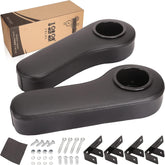
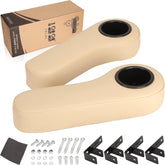
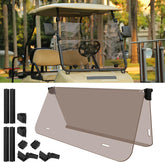
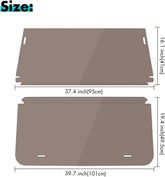

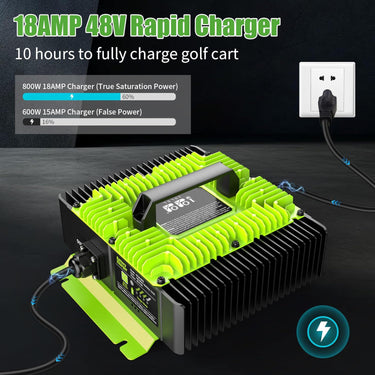

Leave a comment
Please note, comments need to be approved before they are published.